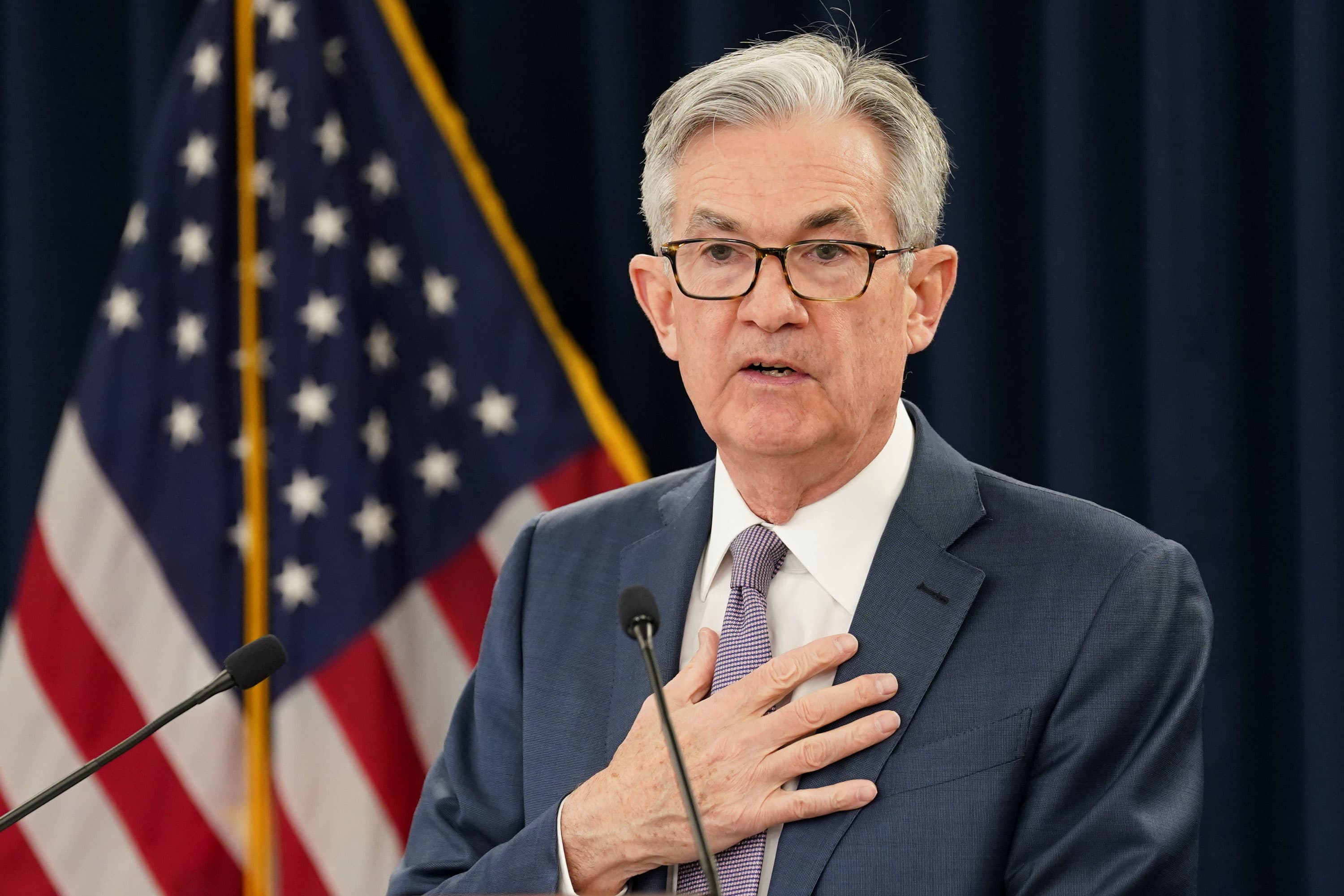Federal Reserve Chairman Jerome Powell speaks to reporters after the Federal Reserve cut interest rates in an emergency move designed to shield the world’s largest economy from the impact of the coronavirus, during a news conference in Washington, March 3, 2020.
Kevin Lamarque | Reuters
After unleashing the most aggressive programs to support markets and the economy in its history, the Federal Reserve is likely to pause any additional initiatives until it has more information about how those moves are working and what lies ahead.
That does not mean, however, that central bank officials won’t have some news in store when they meet this week.
In the months since the coronavirus has ripped through the nation and the world, the Fed has slashed its benchmark interest rate to near zero and launched a variety of programs that also look to get money to households and businesses in need.
Wall Street expects the Fed to keep a lid on interest rates into the foreseeable future and continue to run its liquidity and lending programs for as long as it takes to get the U.S. economy back on its feet and financial markets running smoothly.
Outside of that, it has other work to do, and some moves could be revealed when the Federal Open Market Committee wraps up its meeting Wednesday. On the agenda, according to economists and strategists, could be more explicit guidance about how long rates will stay low, some tinkering with other rates to make sure the benchmark funds level is where it should be, and asset purchases targeted toward driving down longer-term rates.
This week’s meeting “comes after what has been the most active and condensed period of Fed policy-making in its history,” Lewis Alexander, chief U.S. economist at Nomura, said in a note. “Given how much the Fed has already done we are not expecting major innovations in Fed policy … Regarding the path of short-term rates, we expect the FOMC to reiterate that they expect to keep their targets at current levels for the foreseeable future.”
Still, Alexander expects some tweaks.
For one, he thinks the committee will affirm that it is slowing its asset purchases from the blistering pace of late March and early April. The Fed expanded an existing program where it was buying Treasurys and mortgage-backed securities to an open-ended operation, pushing its balance sheet to $6.6 trillion, a 54% increase in just seven weeks. However, the Fed already has decelerated purchases in the past few weeks as market functioning has improved.
Possible rate moves
The Fed won’t be changing its current interest federal funds rate target of 0% to 0.25% But it could adjust the rate, currently at 0.1%, that it pays on excess reserves that banks store at the Fed.
That would be a technical adjustment aimed at pulling up the funds rate from the 0.05% level where it has traded since early April. Ideally, the Fed likes to keep the rate around the midpoint of the target range.
The FOMC also might affirm what it calls “forward guidance,” or a pledge not to raise rates until certain metrics, particularly considering employment and inflation, are hit. Fed watchers, though, expect that something more formal will be released at a later meeting, with this month’s commitment more generic in nature.
“We expect the statement to be adjusted, perhaps to say rates will be low until the recovery is ‘well underway’ and the committee is ‘confident’ that its dual mandate will be achieved,” wrote Citigroup economist Andrew Hollenhorst. “At some point, perhaps in late summer, we expect the Fed will explicitly commit to keep rates low until inflation reaches or exceeds 2% for a sustained period. … However, with rates already low and much uncertainty to be resolved in coming months, we see little reason for the Fed to announce this at the April meeting.”
There’s also the possibility the Fed either could announce or discuss an effort to buy more bonds farther out on the yield curve in an effort to drive down long-term rates. Known as “yield curve control,” such an effort was in discussion even before the coronavirus hit.
More generally, Wall Street is looking for language from the Fed acknowledging the damage done to the economy, and the central bank’s determination to keep policy accommodative.
“The Committee’s statement will have to take on board the dramatic deterioration in the economy since the last meeting in March,” Goldman Sachs economists said. “The Committee’s April statement will have to take on board this dramatic deterioration in the economy. We expect the statement to note that economic activity has ‘contracted sharply,’ to take stock of the historic surge in layoffs, and to acknowledge that household spending and business investment have ‘declined sharply.'”
Goldman expects less activity at the meeting than some of its Wall Street counterparts.
The firm’s economists see Chairman Jerome Powell during his post-meeting news conference indicating that “officials are content” with the current policy moves. Consequently, they now forecast the Fed won’t raise rates until late 2023.
